Stellar Evolution

Credit: NASA, ESA, and The Hubble Heritage Team (STScI/AURA)
Interstellar extinction
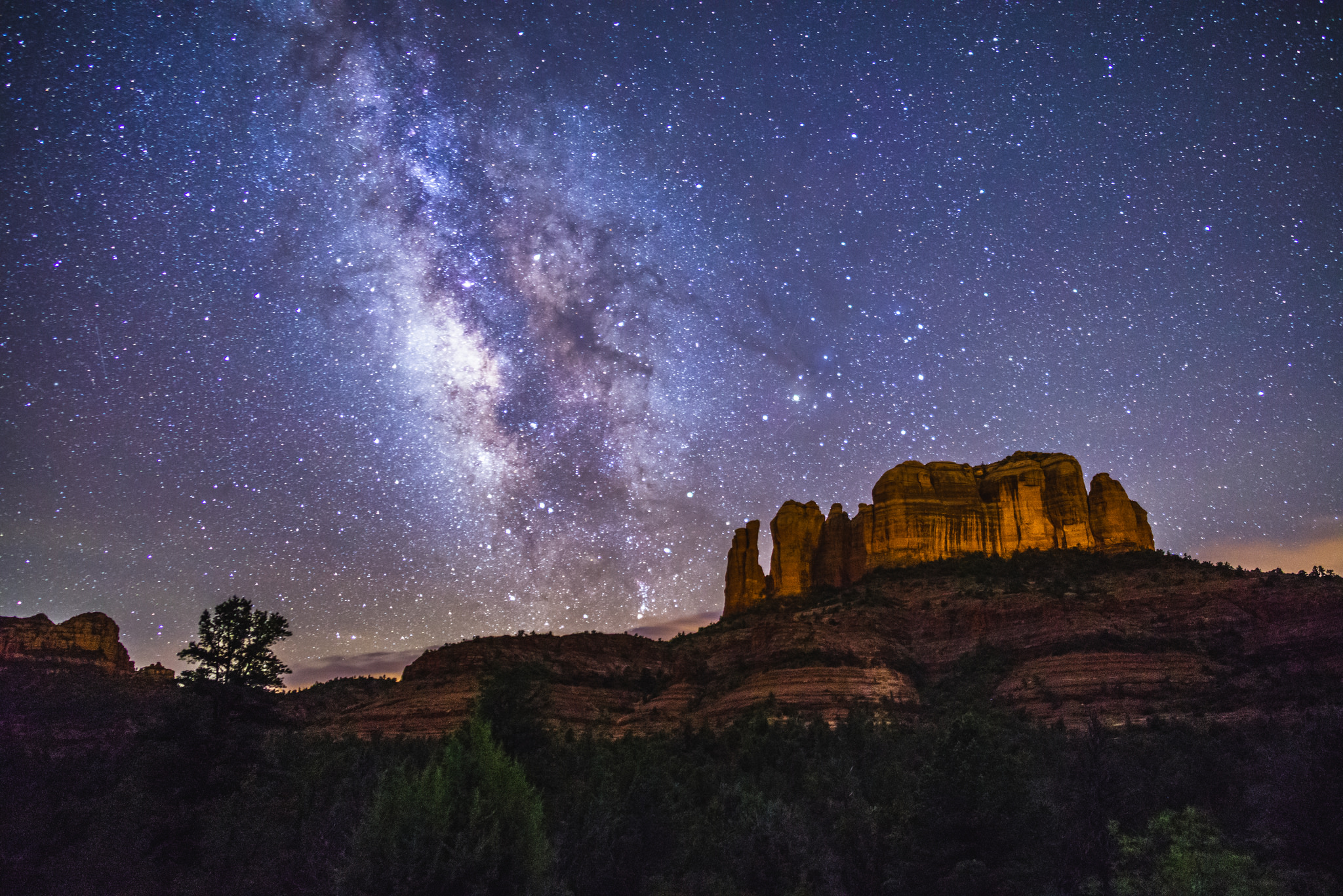
View of the Milky Way over Cathedral Rock, seen from the Cathedral Rock Trailhead on Back O' Beyond Road, Sedona, Arizona. The dark parts of the milky way are there because dust is occluding the light, not because there are no stars there.
In between the stars
Light from stars passes into a dust cloud. Inside the cloud the light interacts with particles. Some light gets transmitted, some reflected.
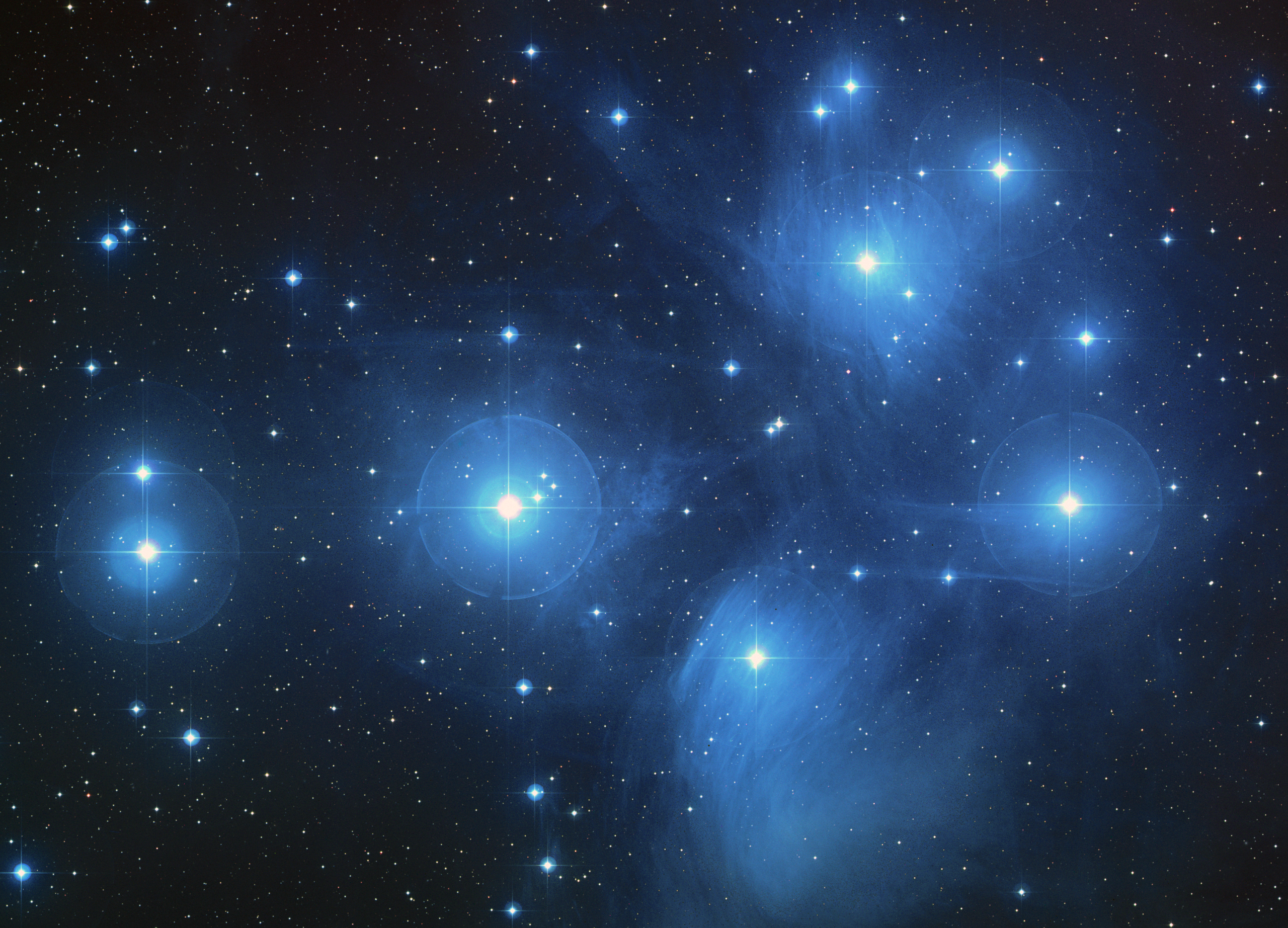
Credit: NASA, ESA, AURA/Caltech, Palomar Observatory
Mie Scattering
What is the stuff?

Some polycyclic aromatic hydrocarbons: C14H10 (anthracene), C24H12 (coroene), and C42H18 (hexabenzocoronene)
Gasses
21-cm line
When the electron spin flips and becomes anti-aligned with the proton, a photon is released. The energy is small, 5.9 × 10-6 eV, which correlates to wavelength of about 21 cm.
For more see Feynman Lectures III - 12
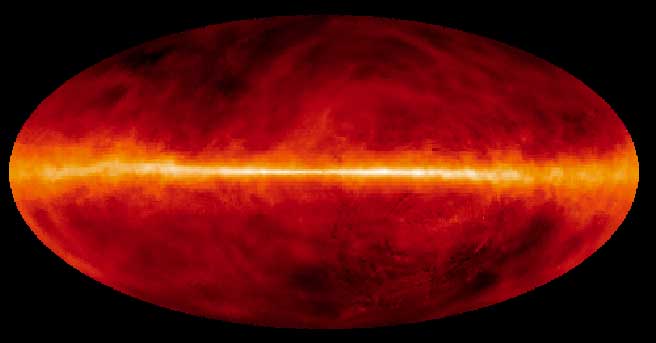
View of the milky way galaxy taken at 1420 MHz (i.e. 21 cm) Neutral Hydrogen exists in the gas clouds shown in this false color image.
Credit: J. Dickey (UMn), F. Lockman (NRAO), SkyView
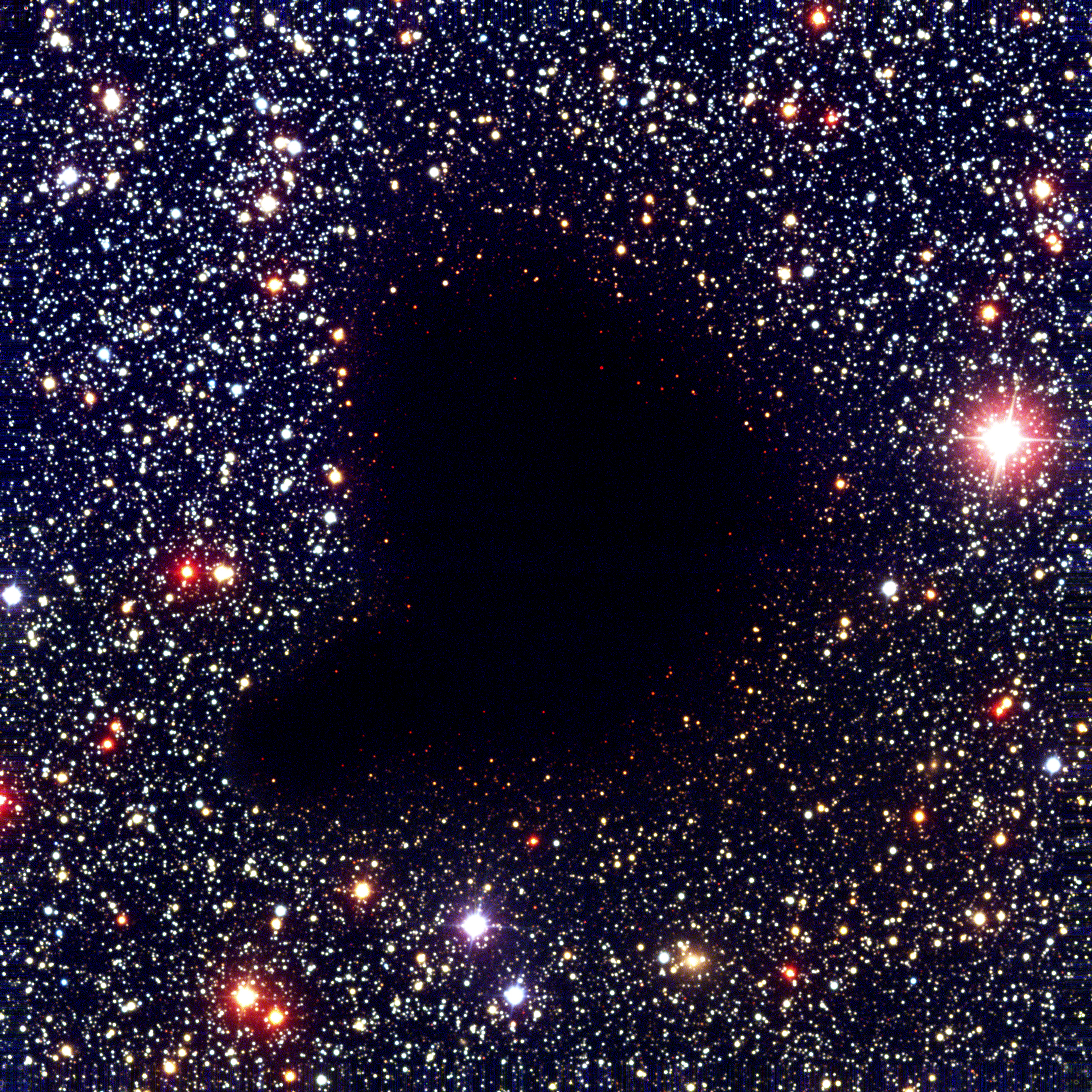
This image shows a color composite of visible and near-infrared images of the dark cloud Barnard 68. It was obtained with the 8.2-m VLT ANTU telescope and the multimode FORS1 instrument in March 1999. At these wavelengths, the small cloud is completely opaque because of the obscuring effect of dust particles in its interior.
Credit: ESO
Protostars
When will gravitational collapse occur? There are two main sources of energy: gravitational and kinetic. Gravitational will lead to contractions, kinetic creates expansion through gas pressure.
Take a cloud with mass $M_c$ and radius $R_c$. The gravitational potential energy is approximately: $$\begin{equation} U \sim -\frac{3}{5}\frac{G M_c^2}{R_c} \end{equation}$$ The kinetic energy of $N$ particles will be approximately: $$\begin{equation} K = \frac{3}{2}N k T \end{equation}$$ Recasting this in terms of the mean molecular weight, $\mu$, $$\begin{equation*} N = \frac{M_c}{\mu m_H} \end{equation*}$$
A more thorough treatment would have to include the pressure from the surrounding ISM. The Bonner-Ebert mass captures the physics of this added complexity: $$\begin{equation} M_{\textrm{BE}} = \frac{c_{\textrm{BE}} v_T^4}{P_0^{1/2} G^{3/2}} \end{equation}$$ where $v_T \equiv \sqrt{\frac{kT}{\mu m_H}}$ is the isothermal speed of sound. $c_{\textrm{BE}}$ is a dimensionless constant approximately equal to 1.18.

Star formation simulation
Free fall collapse
The basic equation of motion for a gravitational system: $$\begin{equation} \frac{d^2 r}{dt^2} = - G\frac{M_r}{r^2} \end{equation}$$ Some differential equations leads to: $$\begin{equation} t_\textrm{ff} = \left(\frac{3 \pi}{32}\frac{1}{G \rho_0} \right)^{1/2} \end{equation}$$
Speed of sound
$$\begin{equation} t_\textrm{pressure} = \frac{r_0}{c_s} \end{equation}$$ and the speed of sound is: $$\begin{equation} c_s = \left( \frac{\gamma k T}{\mu m_p}\right)^{1/2} \end{equation}$$
Compare these two times
$$\begin{equation*} t_\textrm{ff} < t_\textrm{pressure} \end{equation*}$$
$$\begin{equation} \left( \frac{3 \pi}{32 G \rho_0}\right)^{1/2} < r_0 \left(\frac{\mu m_p}{\gamma k T} \right)^{1/2} \end{equation}$$Jeans Length
$$\begin{equation} r_J = \left( \frac{3 \pi \gamma k T}{32 G \rho_0 \mu m_p}\right)^{1/2} \end{equation}$$Star Formation
Perturbation
A shockwave from a nearby supernova can trigger the gravitational collapse. The molecular cloud collapses.
Collapse
However, it cannot collapse for ever, since the angular momentum will be conserved, and as it gets smaller, its rotates faster. $$\begin{equation} \frac{GM}{r_f^2} = \frac{v_f^2}{r_f} \end{equation}$$
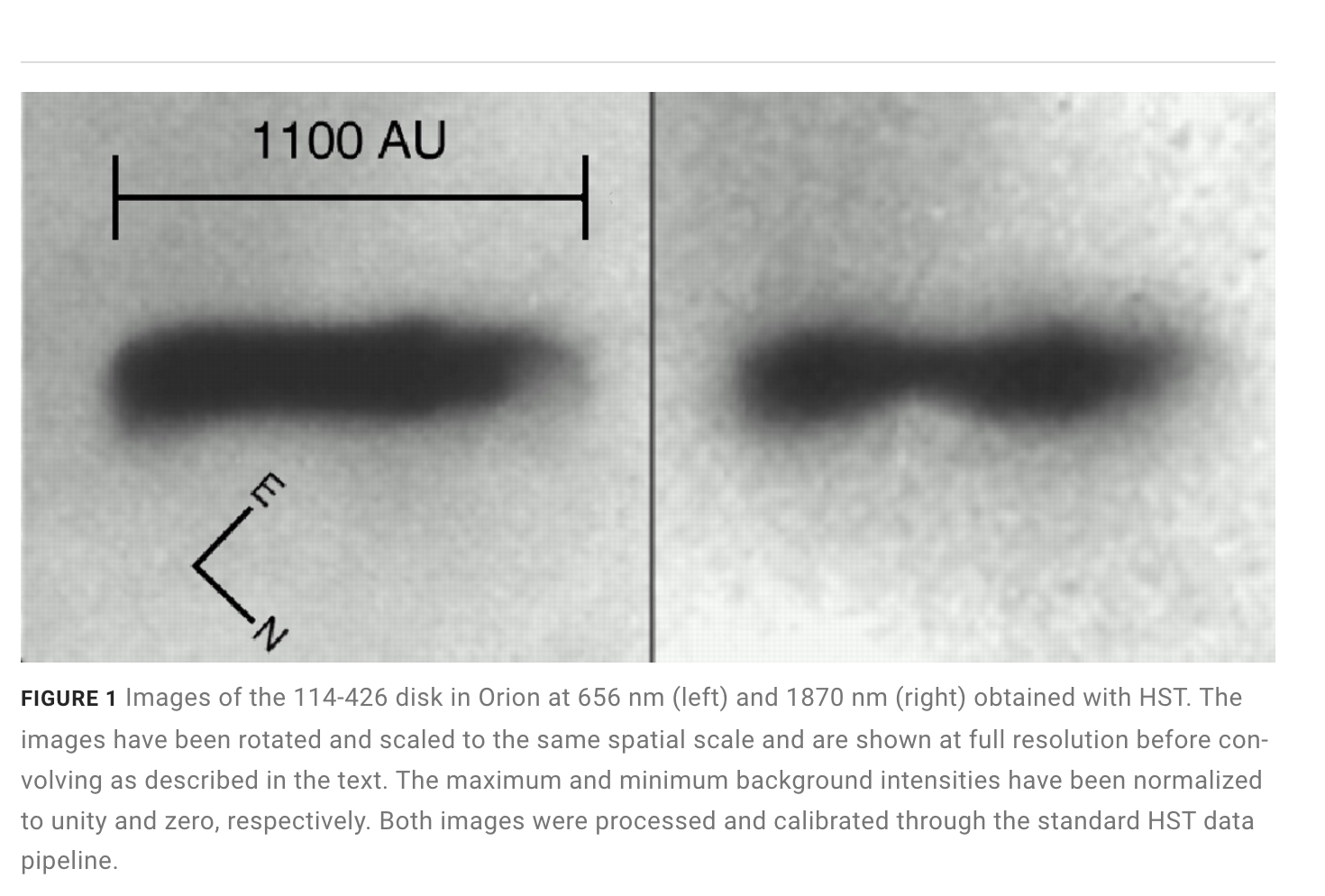
An edge-on protoplanetary disk in the Orion Nebula
https://www.science.org/doi/10.1126/science.1059093
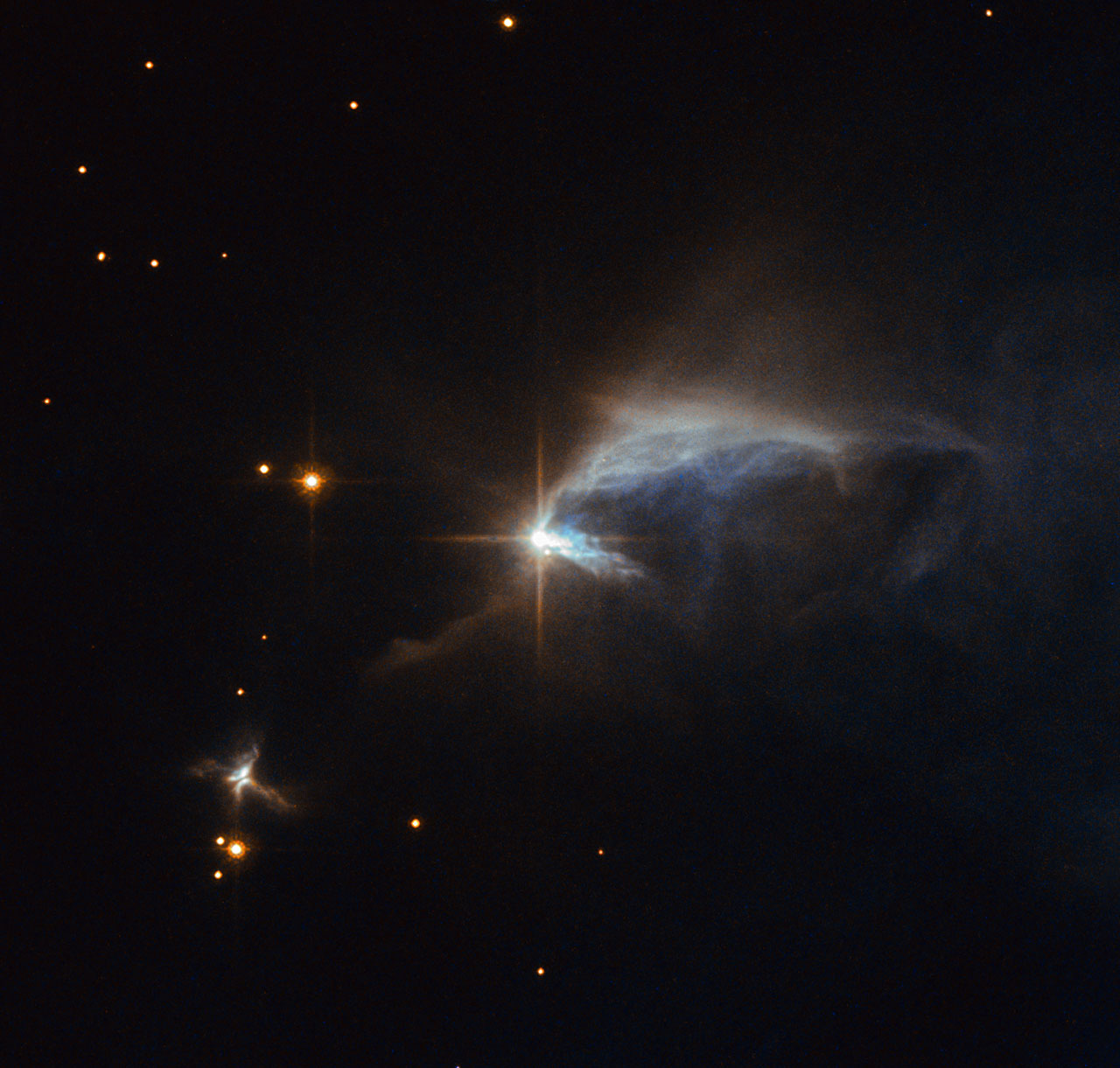
A pre-main-sequence star: HBC 1
ESA/Hubble
Hot gas moves out
Nuclear Fusion Begins
A star (like our sun) is born
Main sequence life
Leaving the Main sequence
Leaving the main sequence
Sub giant to Red Giant
Red Giants
He Flash
Asymptotic Branch
Now, another shell of forms around the core. He will begin to fuse into carbon.
An asymptotic Red giant
Planetary Nebula

X-ray/optical composite image of the Cat's Eye Nebula (NGC 6543)
J.P. Harrington and K.J. Borkowski (University of Maryland), and NASA (HST)
White Dwarf
The white dwarf on the HR Diagram
The final form of a sun like star is a white dwarf. Our sun will eventually loose about 40% of its mass, and will spend the next trillion years just cooling down - no more fusion.
| What | Time | Activity |
|---|---|---|
| Protostar | 50 Myr | Gravitational Attraction |
| Main Sequence | 10 Gyr | Fusion of H to He in the core |
| Red Giant Branch | 1 Gyr | Fusion of H to He in shell |
| Horizontal Branch | 100 Myr | Fusion of H to He in shell, He to C in core |
| Asymptotic Giant Branch | 20 Myr | Fusion of H to He in outer shell, He to C in inner shell |
| Planetary Nebula | 50 kyr | hot core emits UV radiation, gas flouresces |
| White Dwarf | → ∞ | No fusion - cool down |
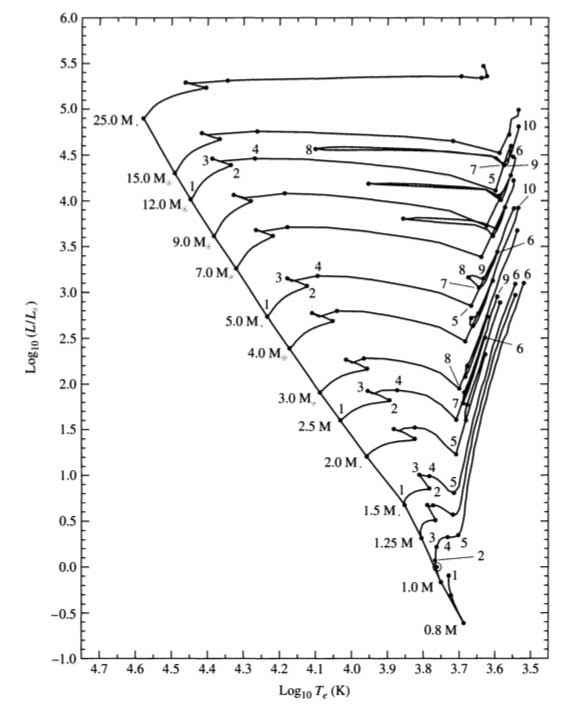
Main sequence and post main sequence evolution of stars.
Carrol and Ostlie Fig 13.1